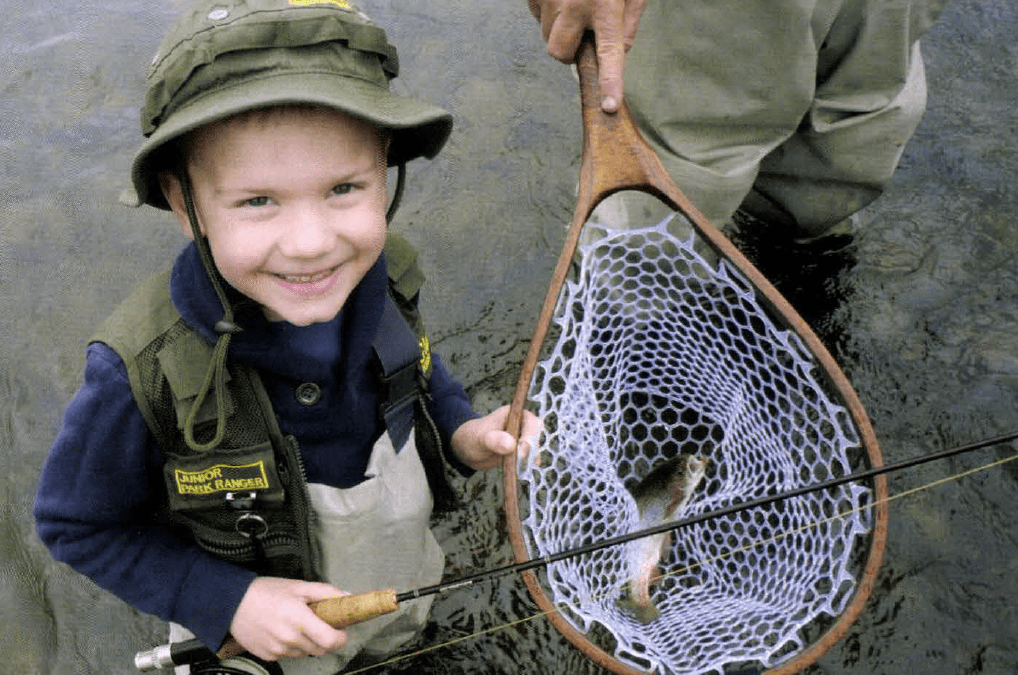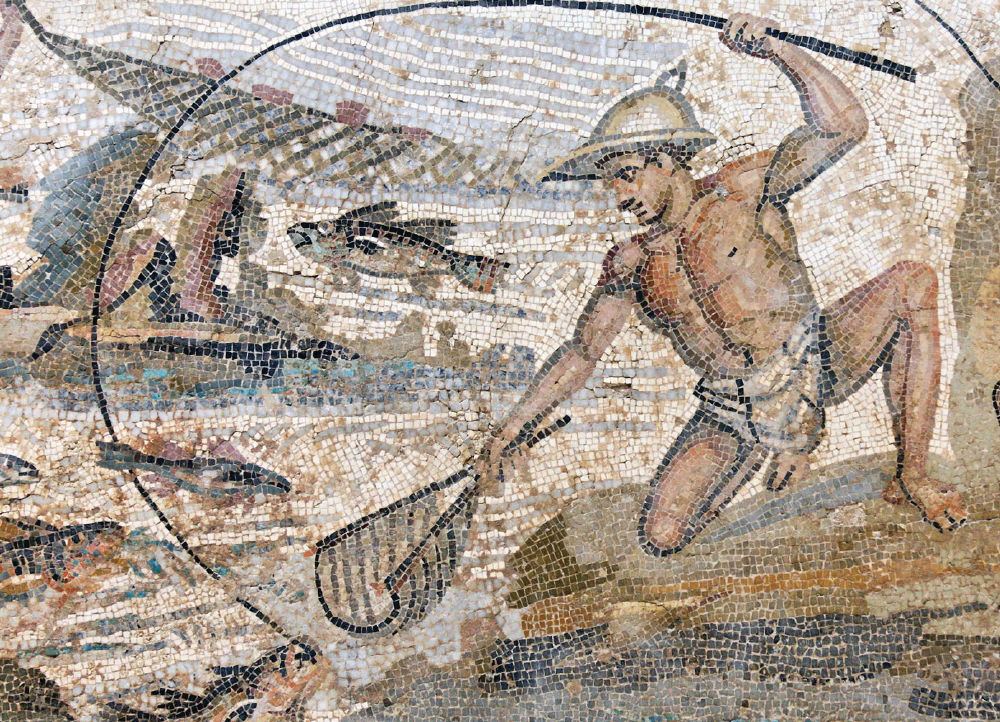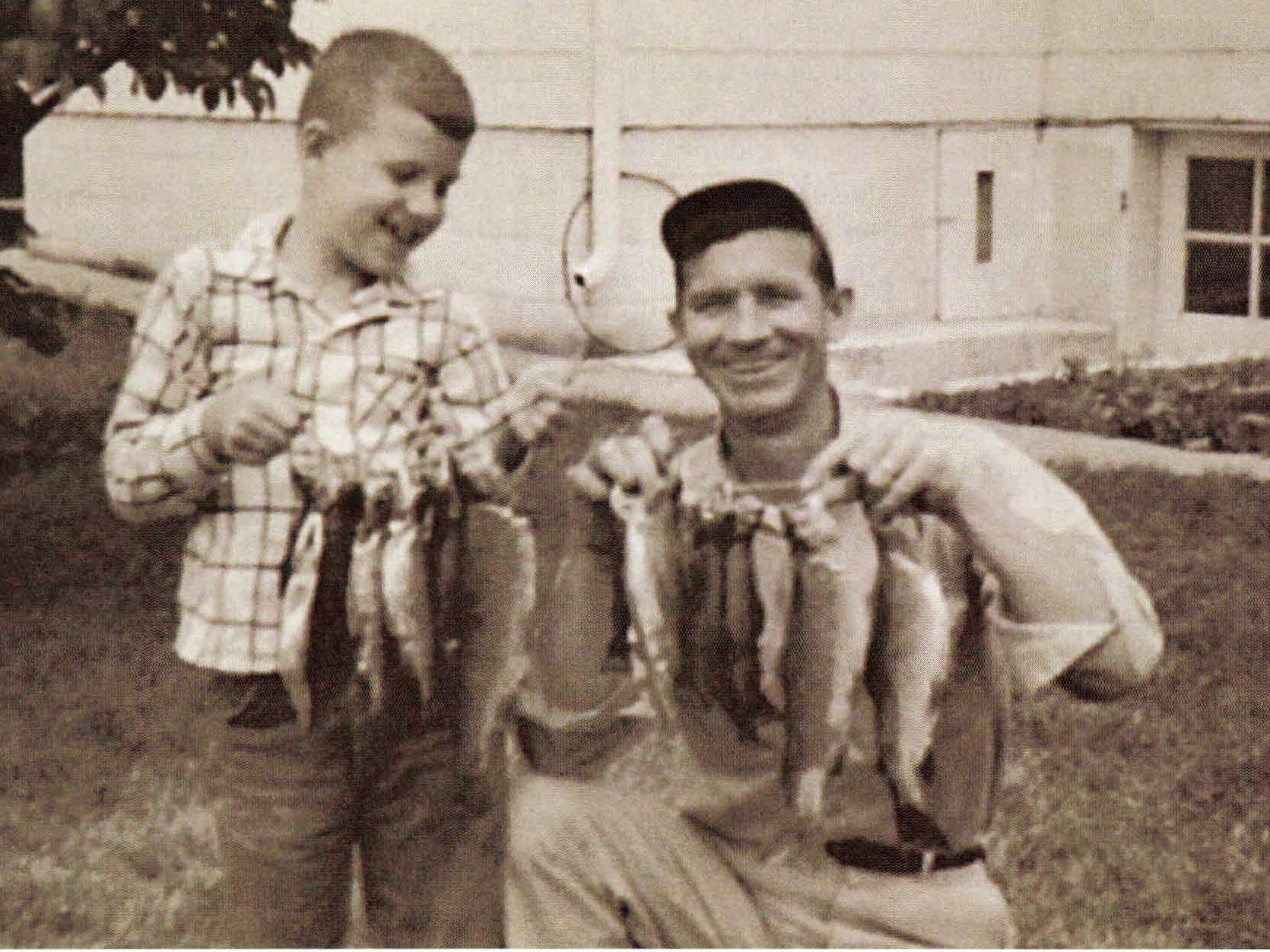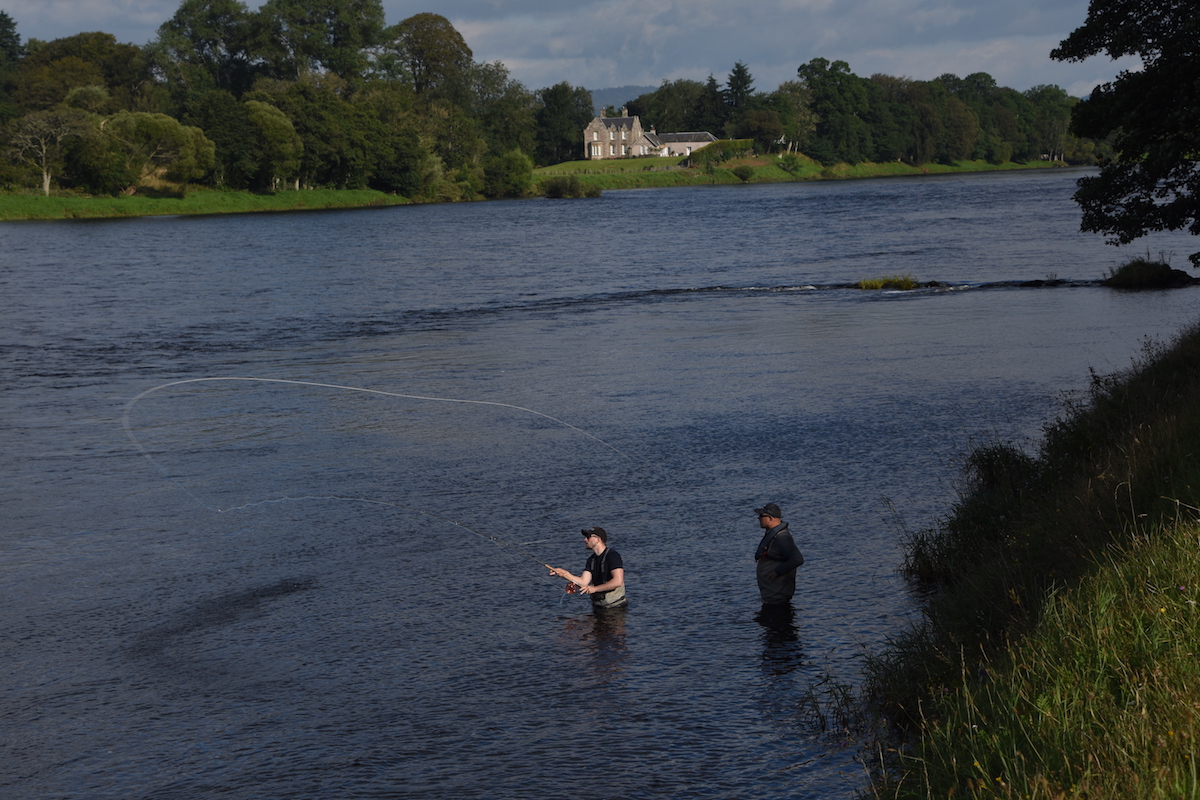He hasn’t yet turned five years old, but already he loves going fishing with the big guys and his new fly rod.
Note: This article originally appeared in the September/October 2014 issue of Sporting Classics.
His name is Gabriel Matthew Altizer, and he has not yet turned five. But he’s been a bona fide trout fisherman for the past 91 years.
There was no choice.
He had to be.
For he’s the son and grandson of the two finest trout fishermen who ever lived – my brother and father – and he carries the trout-fishing genes.
He started fishing with his dad when he was eight months old, riding high in a backpack with his face anchored over Alan’s shoulder, instinctively watching as the dry fly danced down the current. And whenever Alan caught a trout, Gabe would have to get his eager little hands on it before it was released.
Then last Christmas I realized there was a problem.
For you see, Gabe was the only guy in the Altizer family who didn’t have a fly rod of his own. But this was an easy fix, and when I took the new 7-foot 10-inch 4-weight to him, we had to wake him from his nap, and he was cross.
Until he saw his new fly rod.
Oh, don’t think for a moment that he didn’t know exactly what it was. A few minutes later he and Alan and I were out in the front yard, and Gabe was attempting his very first casts. He spent the rest of the winter practicing with it and showing it to people, and then taking it apart and putting it back into its case to carry around and sleep with.
Finally came the spring.
In early March Alan found him a pair of waders that were sized for little people, along with a fishing vest and big floppy hat.
There was only one place on the Holston where the little guy could wade safely, but it held trout. A number-18 bead-head nymph dangled on a 9-foot leader with two feet of 6X tippet was his ticket to bliss. But Gabe broke off two fish before he began to understand the process and gain the touch necessary to land his very first trout – a fat and feisty ten-inch brown.
Moments later Alan dialed my number from the river and handed the phone to our new apprentice, and there was more excitement in that tiny voice than I’d heard from anyone in years as he told me about his big “brown fish” – and especially about all its beautiful red spots.
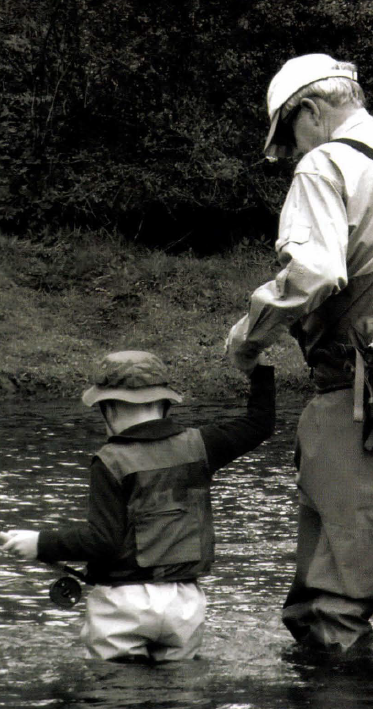 It is now April and the three of us are having a grand ol’ time up on the Holston and over on the Watauga, where Gabe can handle the depth and water flow.
It is now April and the three of us are having a grand ol’ time up on the Holston and over on the Watauga, where Gabe can handle the depth and water flow.
He sings as he fishes, and often I sing with him. He has learned to hold onto the nearest big guy’s waders with one hand in faster water and to anchor the butt of the rod into his little chest and stomach and keep his rod tip up when playing a fish.
He has a good, foundational start on the evolution of his fly-fishing ethics and insists on counting only those trout that he has caught on his own, and not the ones that Alan and I hook first and then let him play. And this afternoon, the little guy schooled dear old Dad and Uncle Mike in the fine art of fly fishing for wild trout.
We had started our day up on the Holston on the back side of Osceola Island. But there was a cold front bearing down, and the fish were somewhat tight-lipped. So we decided to head over to the Watauga above the Hunter Bridge, where the water wasn’t too deep and swift for Gabe to wade safely.
I hooked the first trout, a pretty little rainbow, and let him reel it in. Then Gabe caught a rainbow all on his own, and Alan caught a small brown. But soon the wind picked up, and just as Gabe and I changed songs, his line came taut.
He pulled back with both hands, but only hard enough to set the hook. As the trout took off, Gabe reached for the handle of his reel. But Alan was right there beside him and explained that when a fish pulls this hard, he should let go of the handle and let it run. Gabe urgently explained to him that he would eventually need to reel it in, and when the trout showed signs of tiring, he began doing just that.
Now, usually by this point in a fight, one of us would have seen the fish. But this trout stayed deep, and we quickly realized that it was larger than normal.
It was Alan who first saw that it was a big brown. He moved a few feet downstream with his net, still giving Gabe advice about when to reel and when to let go of the handle. The little man was working hard, trying to keep his rod tip up, and I could see that his arms were beginning to get tired. My first instinct was to help him – but even more, I wanted him to know that in the end, he had played this fish all on his own, win or lose.
So there he stood, alone and butt-deep in the current, with his dad just a few yards below him. Finally, Alan was able to get the fish into his net, and he let out a war-whoop when he saw just how big it was.
I wish I could have seen Gabe’s face. It was the biggest trout he’d caught so far, at least 14 or 15 inches, and when he finally turned to look at me, his grin seemed even bigger than the fish. But when he finally saw all those beautiful red spots, he nearly came undone.
“He has red! He…he has red spots! He has red spots on him!”
The sound of his little voice spread across the water like the joy spreading across his face. He tried to set his fly rod down, but then realized he was still standing out in the river, so I offered to hold the rod for him.
“I wanna let him go,” he insisted. “We will,” Alan assured him as he eased the hook from the point of the trout’s upper lip.
“No – I want to let him go!” Gabe responded with great emphasis. And when Alan had made sure that the fish was upright and in good shape, Gabe reached down and lifted his big brown trout from the bottom of the release net and plunked it back into the current. Only then did I look up at my brother and see a grin even bigger than Gabe’s.
On our way home Alan and I were rattling excitedly, while Gabe rested in his car seat, trying his best to stay awake until he could get back and tell his Mama about his big, beautiful brown trout and show her the video that Uncle Mike shot as he caught it.
Meanwhile, I’m certain his grandfather was telling everyone in Heaven all about it – as if they hadn’t already heard.
And by the way, did I mention that he had red spots!!
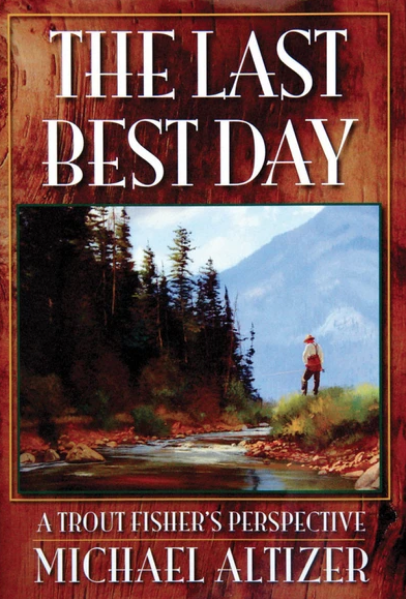 Michael Altizer’s The Last Best Day is a book about fly-fishing. Not so much about fly-fishing as a sport, but fly-fishing as a way of life, an experience so intricately woven into the fabric of being as to be foundational to other less sublime realities or mere physical existence. This is not a book about how to fly-fish, but instead about what fly-fishing means and how it feels and where in can lead, both in body and in spirit.
Michael Altizer’s The Last Best Day is a book about fly-fishing. Not so much about fly-fishing as a sport, but fly-fishing as a way of life, an experience so intricately woven into the fabric of being as to be foundational to other less sublime realities or mere physical existence. This is not a book about how to fly-fish, but instead about what fly-fishing means and how it feels and where in can lead, both in body and in spirit.
These stories come from the creeks and rivers of the Appalachians, to the high country and desert streams of the American Southwest, to the great salmon, rainbow, and grayling waters of Alaska, and back to “the little brook trout stream where the snow monster lives.”
Thirty-five true-life stories covering the author’s fly fishing adventures from the creeks on the Appalachians to the high country streams of the West to the great salmon and trout waters in Alaska. 250 pages; illustrated by Brett James Smith. Buy Now

